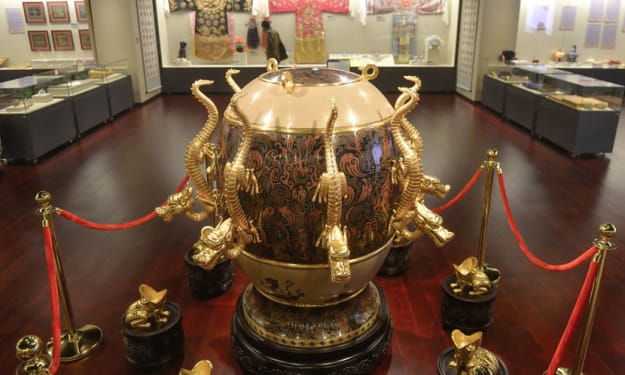Minoan Frescoes: WINDOWS into Past Worlds
History

In the ancient Mediterranean world, the Minoan civilization of Crete flourished during the Bronze Age, leaving behind a rich cultural legacy that included vibrant and evocative frescoes. These artworks, created by skilled Minoan artists between approximately 2000 to 1500 BCE, adorned the walls of palaces, villas, and public buildings, offering glimpses into Minoan life, culture, and religious practices.
Imagine the bustling streets and grand palaces of ancient Knossos, where Minoan artists meticulously applied pigments onto freshly plastered walls to create vivid frescoes. Among the most famous examples are those found in the Palace of Knossos, depicting scenes of ceremonial rituals, religious ceremonies, daily life, and mythological narratives. These frescoes served not only as decorative elements but also as cultural expressions and visual narratives that communicated Minoan beliefs and values.
Central to Minoan frescoes were their vibrant colors, intricate details, and fluid, naturalistic forms. The artists employed a wide palette of natural pigments, including various shades of red, yellow, blue, and green, which were derived from minerals, plants, and other organic materials. The use of bold, contrasting colors and stylized depictions of humans, animals, and marine life reflected the Minoans' connection to nature and their appreciation for aesthetic beauty.
One of the most iconic frescoes is the "Bull-Leaping Fresco," found in the Palace of Knossos. This dynamic artwork captures a ceremonial event where acrobats leap over the back of a bull, showcasing the Minoans' athleticism, religious symbolism, and possibly even their social hierarchy. Another notable fresco is the "Prince of the Lilies," depicting a young prince or priest adorned with lilies, possibly participating in a religious procession or ritual.
The Minoan frescoes not only adorned palace walls but also adorned the walls of elite residences, demonstrating the widespread appreciation for art and beauty within Minoan society. These artworks served as status symbols and cultural markers, reflecting the Minoans' cosmopolitan outlook and their interactions with neighboring civilizations in the Aegean and beyond.
The discovery and excavation of Minoan frescoes, beginning in the late 19th and early 20th centuries, sparked renewed interest in Minoan civilization and its artistic achievements. Archaeologists and art historians meticulously uncovered and preserved these fragile artworks, revealing new insights into Minoan culture, religion, and daily life.
Today, replicas and reconstructions of Minoan frescoes can be found in museums and cultural institutions worldwide, where they continue to captivate audiences with their beauty and cultural significance. These artifacts serve as windows into the distant past, offering valuable clues about Minoan society's social structure, religious beliefs, and artistic achievements.
In celebrating the legacy of Minoan frescoes, we honor the artistic achievements of the ancient Minoan civilization and their contributions to the development of Aegean art and culture. These vibrant artworks not only showcase the Minoans' mastery of painting techniques but also provide enduring testimony to their creative spirit and cultural vitality.
By studying Minoan frescoes, we gain insights into the Minoan worldview, their religious practices, and their artistic sensibilities. The frescoes remind us of the universal human impulse to create and appreciate art, transcending time and culture to inspire generations of artists, scholars, and admirers alike.
Ultimately, the legacy of Minoan frescoes stands as a testament to the enduring power of art to convey stories, emotions, and beliefs across millennia. These ancient artworks continue to enrich our understanding of the past while inspiring ongoing exploration and appreciation of Minoan culture and its profound impact on Western civilization. They serve as timeless reminders of the Minoans' artistic brilliance, offering a glimpse into their sophisticated society and cultural achievements that influenced subsequent civilizations in the Mediterranean region.
About the Creator
Marveline Merab
“History never repeats itself. Man always does.”
― Voltaire
Enjoyed the story? Support the Creator.
Subscribe for free to receive all their stories in your feed. You could also pledge your support or give them a one-off tip, letting them know you appreciate their work.






Comments
There are no comments for this story
Be the first to respond and start the conversation.